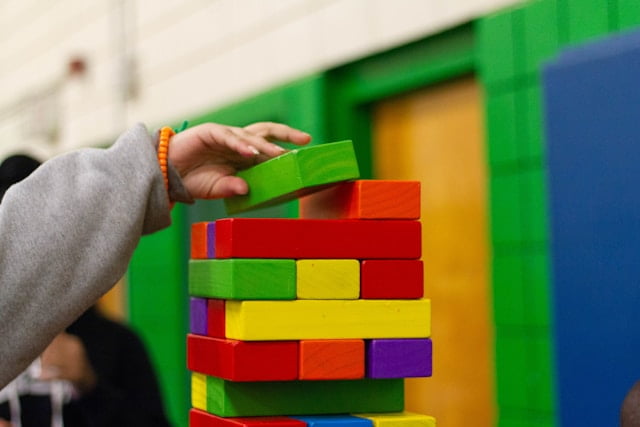Key Learning Points: In the 1950s, Curt Richter, a professor at Johns Hopkins, did a famous drowning rats psychology experiment. This experiment, though cruel, demonstrated the power of hope and resilience in overcoming difficult situations.
A Psychology Experiment: Drowning Rats
In a series of experiments that are fairly cruel and unpalatable, yet interesting in their findings, Curt Richter demonstrated that hope is a powerful factor in perseverance. In our view, this is also closely linked with resilience.
The Drowning Rats Psychology Experiments
Curt’s experiments focused on how long it takes rats to die from drowning. He conducted his experiments by placing rats into buckets filled with water and seeing how long they survived. He introduced a range of variables into the experiment, that yielded some interested results.
Domesticated Rats
12 domesticated rats were used in Curt’s first set of experiments. The first of these rats initially swam around the surface, then dove to the bottom of the bucket and explored what was there for a while. It lasted a total of two minutes before it drowned.
Two of the other domesticated rats did roughly the same thing, and survived for roughly the same period of time.
The other nine domesticated rats though did something completely different. After an initial exploration, the predominantly spent their time and the surface. And the just kept swimming. They survived for literally days before eventually succumbing to exhaustion and drowning.
Wild Rats
The second set of experiments Curt undertook involved 34 wild rats. Wild rats are excellent swimmers, and these savage and aggressive ones had only recently been caught. Obviously, Curt expected them to fight hard for their survival.
Surprisingly though, this wasn’t the case at all. Despite their ferocity, fitness and swimming ability, not one of the 34 wild rats survived more than a few minutes.
The Role of Hope
Curt reflected on what caused some of the rats to give up and decided that hope a key factor in the willingness to struggle on. Where rats have perhaps been helped in the past and have hope of being saved, they will keep fighting in the believe that all is not lost. However, when they don’t have this prior experience, they will give up quickly.
In his own words he said: “The situation of these rats scarcely seems one demanding fight or flight — it is rather one of hopelessness… the rats are in a situation against which they have no defense… they seem literally to ‘give up.’”
With this in mind, Curt decided to experiment further.
Introducing Hope and Support
The last set of experiments that we’ll focus on were concerned with the impact that introducing hope would have on the perseverance of the rats in buckets. In these experiments Curt’s hypothesis was roughly that introducing hope to rats would increase their survival times.
To test his hypothesis Curt selected a new cohort of rats who were all similar to each other. Again, he introduced them into buckets and observed them as they progressed towards drowning. This time though, he noted the moment at which they gave up then, just before they died, he rescued them. He saved them, held them for a while and helped them recover.
He then placed them back into the buckets and started the experiments all over again. And he discovered that his hypothesis was right. When the rats were placed back into the water they swam and swam, for much longer than they had the first time they were placed in the buckets. The only thing that had changed was that they had been saved before, so had hope this time.
Curt wrote that “the rats quickly learn that the situation is not actually hopeless” and that “after elimination of hopelessness the rats do not die.”
What This May Mean For People
Humans and rats are very different beings, but there is still a belief that we can learn a lot from these experiments. Where individuals have hope, they have higher levels of perseverance. They will keep fighting when they feel these is a chance of success or rescue. When they don’t have hope, they won’t.
A range of other experiments have also supported this.
What This Means in the World of Work
From a work perspective, these findings can be taken to mean that people will remain resilient and will continue to persevere in the face of difficult situations, provided they have hope.
So, if they are rescued from time to time. If they are supported. If they believe the future will be a better place and if they feel others are there to help them, they may be able to drive themselves through difficult situations. The importance of belief here is similar to the importance of belief in the expectancy theory of motivation.
What this means for leaders is that people in your team will be strong and resilient, provided that you give them hope of a better future. If that hope is extinguished, your people will stop fighting for you.
Some Specific Quotes from Richter
“The situation of these rats scarcely seems one demanding fight or flight—it is rather one of hopelessness; whether they are restrained in the hand or confined in the swimming jar, the rats are in a situation against which they have no defense. This reaction of hopelessness is shown by some wild rats very soon after being grasped in the hand and prevented from moving; they seem literally to ‘give up’.
Support for the assumption that the sudden death phenomenon depends largely on emotional reactions to restraint or immersion comes from the observation that after elimination of the hopelessness the rats do not die. This is achieved by repeatedly holding the rats briefly and then freeing them, and by immersing them in water for a few minutes on several occasions. In this way the rats quickly learn that the situation is not actually hopeless; thereafter they again become aggressive, try to escape, and show no signs of giving up. Wild rats so conditioned swim just as long as domestic rats or longer.”
You can find these comments on p196 of this pdf.
Learning More
Our resilience can be an important factor in our Wellbeing in the workplace. It’s a bit of a difficult concept to pin down, but we can get a sense of how resilient we are with the Brief Resilience Scale.
There are steps we can take to improve our own wellbeing. Improving our self-awareness might also help us improve our wellbeing. Similarly, learning about different types of stress and how to manage stress can be helpful.
Our View
These drowning rats psychology experiments are clearly abhorrent, as is most animal testing. We know that the findings of many experiments do not translate to humans. In fact, experiments of this nature are still being used by several organizations. This should stop. A good starting point for finding out which organizations still use this form of testing so that you can avoid their products is this article by PETA.
Though these experiments should no longer take place, we shouldn’t ignore what people have already discovered from them in the past. The findings from these experiments are interesting. The fact that hope leads to greater resilience comes as little surprise to us, though of course findings in rats may not translate to other species. That said, we think this is probably the case in humans as well as rats.
In fact, we believe that a large part of the role of leadership is to help individuals feel valued, respected, supported and hopeful about their futures. In doing this, individuals can have better qualities of working life, and organizations can have higher levels of productivity.
That said, we think these experiments and the lessons that can be learned from them are also very sinister. It’s clearly the case that providing people with hope, real or false, inspires them to greater effort. We are certain that many organizations and HR functions know this, and look to build this into their management approaches.
Where hope is real, it’s good. Where it’s falsely introduced to drive individuals to higher levels of perseverance in poor working situations, then it’s quite reprehensible. Which doesn’t mean it’s not profitable or that it doesn’t happen. It just means that people should not work for these organizations where they have any choice.
Interestingly, the relationship between hope and faith has been discussed many times throughout history. A good place to listen to some reflections on this is in this episode of the BBC podcast “In Our Time”.
How We Help Organizations
We provide leadership development programmes and consulting services to clients around the world to help them become high performing organizations that are great places to work. We receive great feedback, build meaningful and lasting relationships and provide reduced cost services where price is a barrier.
Learning more about who we are and what we do it easy: To hear from us, please join our mailing list. To ask about how we can help you or your organization, please contact us. To explore topics we care about, listen to our podcast. To attend a free seminar, please check out our eventbrite page.
We’re also considering creating a community for people interested in improving the world of work. If you’d like to be part of it, please contact us.
Sources and Feedback
Schulkin, Jay, and Paul Rozin. Curt Richter: A Life in the Laboratory. Baltimore: Johns Hopkins University Press, 2005., doi:10.1353/book.60340. https://www.aipro.info/wp/wp-content/uploads/2017/08/phenomena_sudden_death.pdf
We’re a small organization who know we make mistakes and want to improve them. Please contact us with any feedback you have on this post. We’ll usually reply within 72 hours.






